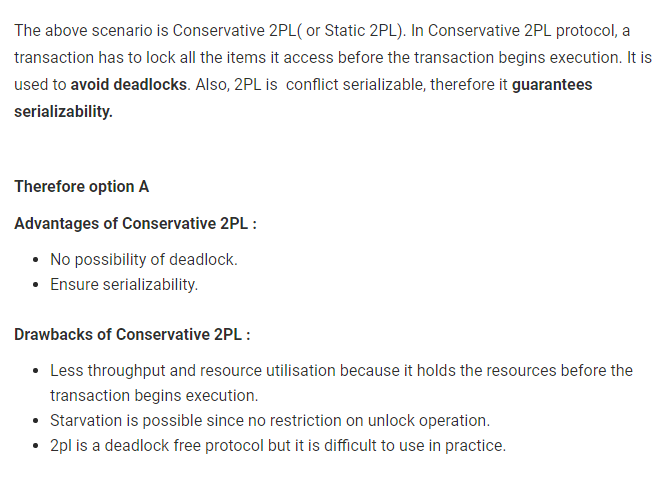Q. 61 Consider the following two phase locking protocol. Suppose a transaction T accesses (for read or write operations), a certain set of objects {O1,…,Ok}. This is done in the following manner:
Step 1. T acquires exclusive locks to O1, . . . , Ok in increasing order of their addresses.
Step 2. The required operations are performed.
Step 3. All locks are released.
This protocol will
(A) guarantee serializability and deadlock-freedom
(B) guarantee neither serializability nor deadlock-freedom
(C) guarantee serializability but not deadlock-freedom
(D) guarantee deadlock-freedom but not serializability
Answer: (A)
Explanation:













